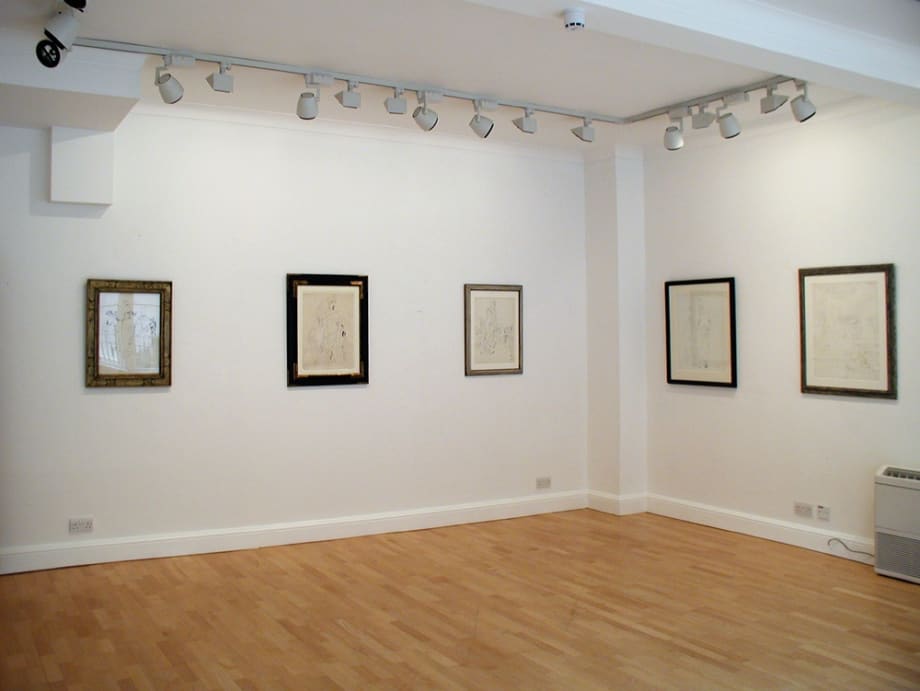Edward Burra: Stage and Cabaret
Edward Burra: Stage and Cabaret presents works by one of the greatest Modern British draftsmen and water colourists of the twentieth century.
The exhibition focuses on some of Burra's favourite subjects: the cabaret, music-hall and stage. It includes not only drawings made in England but also works made on the artist's extensive world travels.
The exhibition includes a series of little known stage and costume designs for Bizet's Carmen, which Burra made for the very first production of the Covent Garden Opera Company (Royal Opera House, Covent Garden) staged in January 1947. This was one of Burra's major commissions for the stage and his studies show the seriousness with which he took it, combining watercolour and pencil with swatches of material. However, the translation of Burra's elaborate watercolours to the stage shocked him when he saw a preview. As he wrote in his own inimitable style in a letter of 25 December 1946:
" Well dearie how are you with the pantomimes. I saw act 1 of Carmen the set I mean. from the 10th row youd never notice any of the little nuances and from anyway further just a lovely far away dream. and the Spanish shawls!"
Also included are detailed drawings in black ink, depicting Hollywood stars of stage and screen, which were published in the Humbert Wolfes's ABC of Theatre (1932).
SELECTED REVIEWS
Edward Burra
James Hyman West End
"Our equivalent of George Grosz, Edward Burra is seriously underrated. His drawings of low life, seedy bars and society types are alive with the same cruel wit and sharp eye for telling detail. This show contains a strange assortment of delights, many apparently unfinished. The gnome-like man in the orchestra pit of the half-finished theatre scene could be straight from a Grosz cartoon. In the circle sits a Bloomsbury intellectual - a woman whose Sitwell-like features are set off by a cloche hat. One leg draped over an androgynous figure on a chaise longue, his svelte singer is all eyebrows and open mouth. Although she is outlined in black ink, one sees ruby red lips and emphatic eyeliner. Strangely abstracted, his 'Three Graces' wear togas. Their heads defined by the laurels that entwine them, they remind one of Archimboldo, yet their mechanistic surreality is reminiscent of Leger.
Burra's neglect comes partly from such reminders of other artists, but mainly because, rather than making paintings, he stuck to drawings and watercolours- considered lesser artforms. On show are a series of designs for a production of Bizet's 'Carmen' staged at Covent Garden in 1947. Given the subject and Burra's love of flamboyant dress, the costumes are surprisingly subdued. The men look more like cowboys than toreadors - more Clint Eastwood than El Cordobes. Their cloaks resemble Mexican blankets rather than matadors' capes and their shirts and pants are in soft browns and pinks, burnt orange and crimson offset with flashes of navy or turquoise. Coloured brown and ochre, Carmen's flamenco style dress is equally subdued. But the watercolours do reveal the subtle beauty of Burra's colour; a pity that none of his gorgeous landscapes are included."
Sarah Kent, Time Out, January 29th - February 5th
"When I spoke to a bullish James Hyman of James Hyman Gallery (6 Mason's Year, Duke Street, St James's, SW1Y 6BU. Tel: 020 7839 3906) at the Art on Paper Fair, he told me things were going well at his new gallery.
Until March 7, the space, which was once the home of the Indica Gallery, the meeting place of Yoko Ono and John Lennon, is hung with 23 Edward Burra (1905-1976) watercolours and drawings inspired by some of the artist's favourite subjects - theatre, opera, cabaret and music hall.
Included are black ink drawings for Humbert Wolfe's ABC of Theatre (1932) and a series of little-known designs (£1400-) for Bizet's Carmen, which Burra made for the first production of the Covent Garden Opera Company, staged in January 1947.
Many of the works come directly from Burra's estate, with prices starting at £1200 for a c.1925 drawing of a man resting, and topping £20,000 for Dancing Girls, a work of 1929."
Anthony J. Lester, 'Round the Galleries', Antiques Trade Gazette , 15th February, 2003
Join our mailing list
* denotes required fields
We will process the personal data you have supplied to communicate with you in accordance with our Privacy Policy. You can unsubscribe or change your preferences at any time by clicking the link in our emails.

